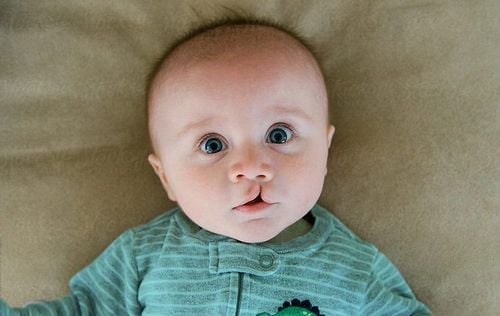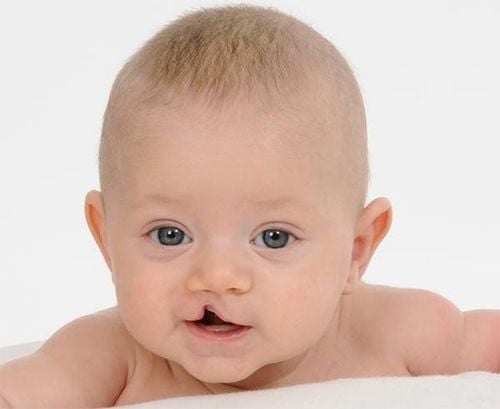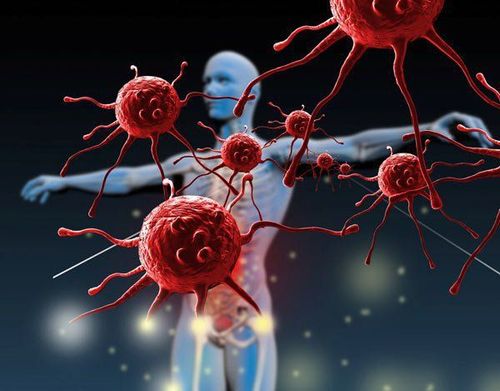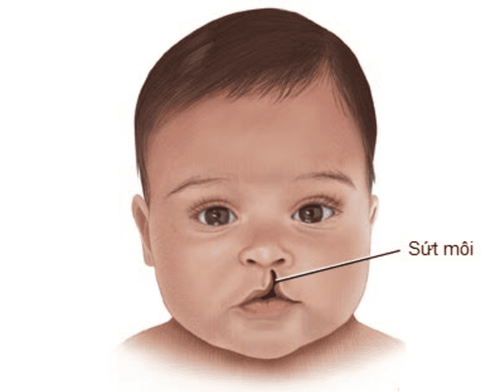This is an automatically translated article.
The article was professionally consulted with Master, Specialist I Tran Tuyen - Pediatrician - Department of Pediatrics - Neonatology, Vinmec Central Park International General Hospital.The cleft lip condition changes the anatomical structure, aesthetic shape of the face, causing many consequences, especially functional disorders in eating, breathing, pronunciation of young children, affecting the mind. heavy burden on the patient and family. Cleft palate has many forms of which the most common is the maxillary cleft.
1. Causes of cleft upper lip
Cleft palate, also known as cleft lip or cleft palate, is a birth defect that accounts for 1-2% of all babies born. This disease is social and needs to be addressed on a regular basis. There are many causes of cleft palate, some of which can be mentioned as follows:Infection: Pregnant women are infected with viruses during the first 3 months of pregnancy, especially influenza virus infection. , bacterial infections cause harmful effects on the fetus, create disorders, prevent the normal development of the fetus in the maxillofacial region. Physical and chemical agents: Such as radiation during and before pregnancy, X-ray infection, toxic chemicals such as industrial and agricultural chemicals, medical drugs... Diet and trauma In the first 2-3 months of pregnancy, stress affects the development of the baby's face, internal causes such as incomplete state of sex cells, too early pregnancy or too late, white people have a higher risk of cleft palate than black people, or inherited from previous generations. Some patients are exposed to radiation, toxic substances can also cause genetic mutations to be passed on to the next generation, causing cleft lip and palate.
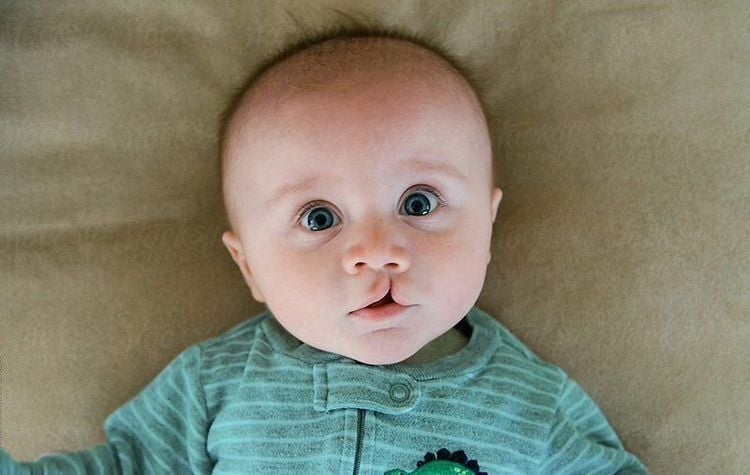
Có nhiều nguyên nhân khác nhau gây hở khe môi hàm trên ở trẻ
2. Classification of cleft lip
Cleft palate can be classified according to embryology, according to the relationship with the jaw, according to the related to surgery, the classification according to the anatomical lesion is the most appropriate and common. Accordingly, there will be degrees of cleft palate including:Upper lip cleft: Including cleft palate on one side and cleft palate on both sides
Upper lip cleft on one side:
Cleft lip Grade I: The cleft is only found in red lips. Cleft lip grade II: There is cleft lip red and partial lip height. Cleft lip grade III (grade IIIa): Simple total lip cleft, only communicating to the base of the nostrils. Cleft lip grade IV (grade IIIb): Cleft of the entire lip combined with cleft palate and palate. Bilateral upper lip cleft (double lip cleft):
There are 2 clefts in the same upper lip. Grading the degree is similar to that of a unilateral cleft lip. The two clearances may be of the same or different extent.
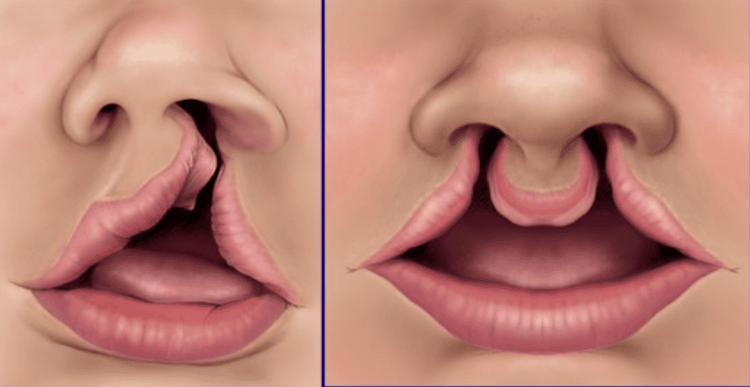
Một số loại khe hở môi vòm miệng
3. Effect of cleft palate on maxilla
Children with cleft lip in general and cleft lip on the upper jaw will experience the following functional disorders:Eating disorders: At birth, babies have difficulty sucking, cannot suck at the breast, sucking or choking, Sometimes choking causes asphyxiation or bronchopneumonia requiring emergency care. Respiratory disorders: Mixed breathing through both the nose and mouth, nasopharyngitis due to food stuck in the nasopharynx, enlarged tonsils causing snoring, snoring while sleeping. Pronunciation disorders: When children begin to practice speaking, it will be very difficult, slurred speech or incorrect pronunciation in some nasal sounds due to cleft palate Besides, children also inevitably suffer from physical damage when learning to speak. cleft upper lip . Cleft palate is a condition in which there is one or two clefts, dividing the upper lip into disproportionate parts, the child has a lack of lip height, hypoplasia, misplaced attachment of the lip sphincter, the cleft will become wider when the patient laughs or cries.
In cleft lip level II, III, the patient will have a flattened nose, low on the cleft side, asymmetrical nostrils, the base of the nostrils is stretched out, low on the sides. In addition, the patient's nasal column is deviated, twisted, leading to the deviation of the tip of the nose.
Patients with cleft palate and upper jaw have changes in the jaw bone, the dental arch causes imbalance, the teeth are underdeveloped, often grow out of alignment, rotate the axis, there are cases where the teeth erupt through the roof of the mouth or affect the nostrils. seriously affect the function of the mouth and nose.
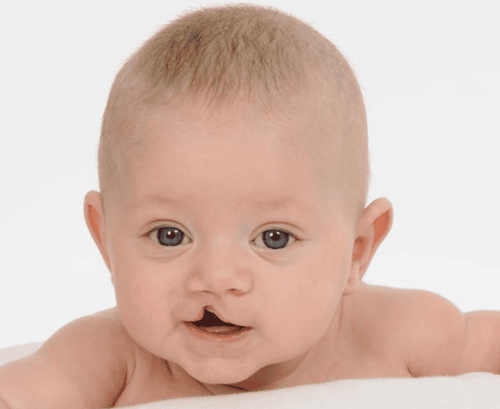
Hở khe môi hàm trên khiến trẻ gặp khó khăn trong cuộc sống
4. Treatment of cleft upper lip
Orthopedic surgery is the most popular method of treating cleft palate in the upper jaw. Cleft lip surgery can be performed when the child is 3-6 months old, for cases of cleft lip accompanied by cleft palate, cleft palate surgery is performed later, about 12-18 months old. Surgery to facilitate the development of the lips, nose, and upper jaw for the child during normal development time in the future.Vinmec International General Hospital with modern investment facilities and a team of experienced and qualified doctors and specialists is a reliable address for parents when sending their children to visit. and treatment.
Please dial HOTLINE for more information or register for an appointment HERE. Download MyVinmec app to make appointments faster and to manage your bookings easily.




